The Core i7 980X Review: Intel's First 6-Core Desktop CPU
by Anand Lal Shimpi on March 11, 2010 12:00 AM EST- Posted in
- CPUs
It’s rare that anything we review has the longevity that Intel’s Core i7 Bloomfield platform has enjoyed. If you were one of the fortunate few to buy a Core i7 920, 940 or 965 back in November 2008, you’d still have one of the fastest desktop CPUs today in March 2010.
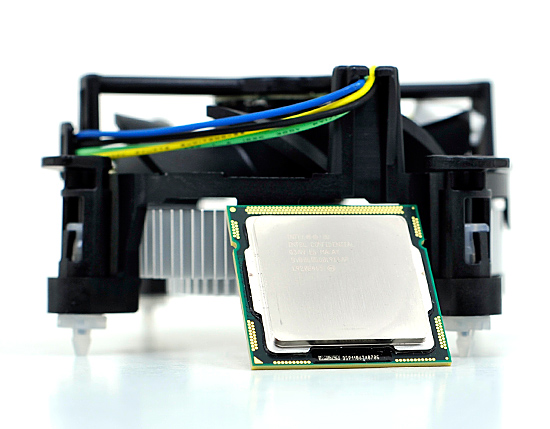
Lynnfield was introduced in 2009, but still couldn't dethrone Bloomfield.
In fact, other than a few minor speed bumps, Intel hasn’t done much with its LGA-1366 platform in the past 15 months. Last year Intel introduced Nehalem for the rest of us with its LGA-1156 socket and in January we got the first dual-core derivatives.
Now it’s finally time to take care of the folks who invested in Nehalem and Core i7 early on. In the coming weeks Intel will be shipping its first 6-core desktop processor, built using the same 32nm process used in the Clarkdale Core i3/i5 CPUs. It’s codenamed Gulftown but today we can call it the Core i7 980X. Did I mention that with a BIOS update it’s fully compatible with all X58 motherboards? That’s right, even if you bought a board in November 2008 - you can upgrade directly to Gulftown.
| Processor | Core Clock | Cores / Threads | L3 Cache | Max Turbo | TDP | Price |
| Intel Core i7 980X | 3.33GHz | 6 / 12 | 12MB | 3.60GHz | 130W | $999 |
| Intel Core i7 975 | 3.33GHz | 4 / 8 | 8MB | 3.60GHz | 130W | $999 |
| Intel Core i7 960 | 3.20GHz | 4 / 8 | 8MB | 3.46GHz | 130W | $562 |
| Intel Core i7 930 | 2.80GHz | 4 / 8 | 8MB | 3.06GHz | 130W | $284 |
| Intel Core i7 870 | 2.93GHz | 4 / 8 | 8MB | 3.60GHz | 95W | $562 |
| Intel Core i7 860 | 2.80GHz | 4 / 8 | 8MB | 3.46GHz | 95W | $284 |
| Intel Core i5 750 | 2.66GHz | 4 / 4 | 8MB | 3.20GHz | 95W | $196 |
| Intel Core i5 670 | 3.46GHz | 2 / 4 | 4MB | 3.73GHz | 73W | $284 |
| Intel Core i5 661 | 3.33GHz | 2 / 4 | 4MB | 3.60GHz | 87W | $196 |
| Intel Core i5 660 | 3.33GHz | 2 / 4 | 4MB | 3.60GHz | 73W | $196 |
| Intel Core i5 650 | 3.20GHz | 2 / 4 | 4MB | 3.46GHz | 73W | $176 |
| Intel Core i3 540 | 3.06GHz | 2 / 4 | 4MB | N/A | 73W | $133 |
| Intel Core i3 530 | 2.93GHz | 2 / 4 | 4MB | N/A | 73W | $113 |
| Intel Pentium G9650 | 2.80GHz | 2 / 2 | 3MB | N/A | 73W | $87 |
The Entire 2010 Nehalem/Westmere lineup
In fact, that’s exactly what I did for today’s review. This is Intel’s DX58SO motherboard I used in my original Core i7 review in November 2008:
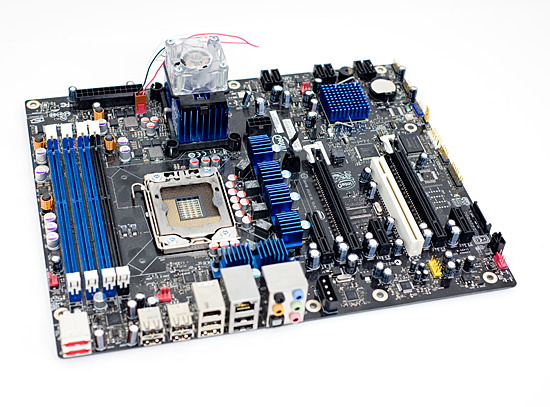
It’s the same exact board, but updated to the 5020 BIOS that’s currently available on Intel’s site. Intel was sneaky and actually enabled Gulftown support in its motherboards a few weeks ago.
And here we have the result:
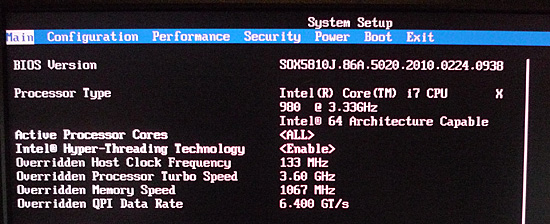
Intel’s Core i7 980X, running at 3.33GHz with 6 cores, 12 threads and a massive 12MB L3 cache all running on a motherboard that shipped a year and a half ago.

The old board works mostly fine with the 980X but with some odd bugs and quirks that I ran into. I found that my older DDR3-1066 memory wouldn't overclock to 1333MHz with Gulftown, although it did just fine with Bloomfield for some reason.
It’s not just Intel enabling support either. All motherboard manufacturers either have or are expected to have BIOSes with Gulftown support by the time this chip ships in the coming weeks. ASRock sent over its X58 Extreme, which worked perfectly with the new chip:

It’s Extreme
The coolest part of Gulftown is that by building it on Intel’s 32nm process it’s actually smaller than both Bloomfield and Lynnfield, despite having 50% more cores and L3 cache:
| CPU | Codename | Manufacturing Process | Cores | Transistor Count | Die Size |
| Westmere 6C | Gulftown | 32nm | 6 | 1.17B | 240mm2 |
| Nehalem 4C | Bloomfield | 45nm | 4 | 731M | 263mm2 |
| Nehalem 4C | Lynnfield | 45nm | 4 | 774M | 296mm2 |
| Westmere 2C | Clarkdale | 32nm | 2 | 384M | 81mm2 |
| AMD Phenom II X4 | Deneb | 45nm | 4 | 758M | 258mm2 |
At 1.17 billion transistors, it’s a beefy chip but the monolithic die only measures 240mm^2. It’s even smaller than an AMD Phenom II X4. Not only does it have a smaller die than all quad-core Nehalem processors, but it also has the same TDP.
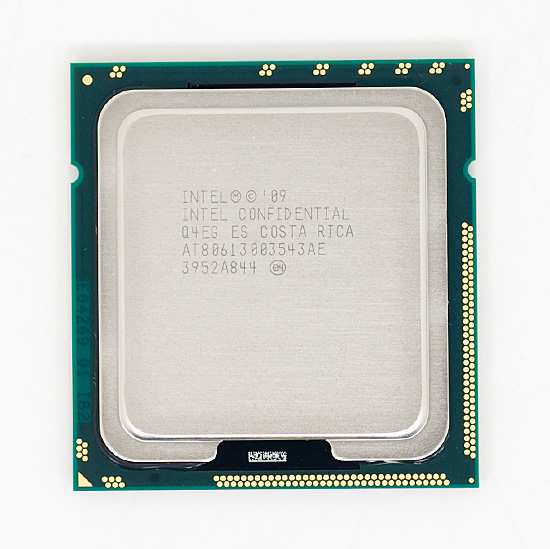
The 130W chip runs at 3.33GHz, but because of the high TDP it can only turbo up to 3.46GHz with more than two cores active. If only one or two cores are active, the chip can turbo up to 3.60GHz. With up to 6 cores running at 3.46GHz, Gulftown is not only the fastest CPU in Intel’s lineup, it’s also the fastest quad-core Intel makes. Only the Core i5 670 can run at a higher frequency with a single core active (3.73GHz vs 3.60GHz).
The downside to all of this is the price tag. The Core i7 980X is an Extreme Edition processor, meaning it’s introduced at the $999 price point. And currently it’s the only way to get 6-cores in a Core i7. Currently Intel doesn't have any plans to introduce 4-core versions of Gulftown on the desktop, although we will see some 32nm quad-core Xeons later this year.
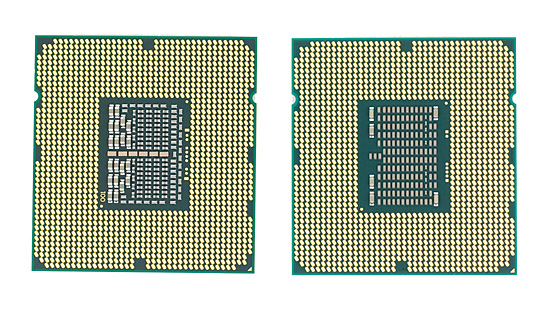
Bloomfield (left) vs. Gulftown (right)
This isn’t the first time that the $999 price tag comes with some exclusive features. The first Pentium 4 Extreme Edition was the very first to wear the EE brand. While all regular Pentium 4s at the time had a 512KB L2, the Pentium 4 Extreme Edition added a 2MB L3 cache - a feature that never trickled down to the mainstream P4s.
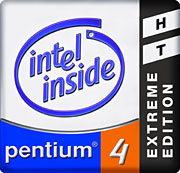
Since then, most Extreme Edition parts have just been higher clocked CPUs. Despite that, they do sell well enough for Intel to continue the practice. Given that this time around, the Core i7 980X will not only give you clock speed but more cores and cache, Intel will probably end up selling more of these than they ever have.










102 Comments
View All Comments
palominoforever - Thursday, March 11, 2010 - link
Please test 7-zip compression with 7z 9.x which support lzma2 algorithm that can support 16 cores. It runs much faster than 7z 4.x on my i7 920.just4U - Thursday, March 11, 2010 - link
I've had the 920 for 13 months now and seeing this review makes me want to do a little dance. (I also have a PII 920 I like very much) The 920 holds up well I think overall.Some will b e horrified to know that I run it at stock. It can go quite high and I've got it set up with aftermarket cooling but I haven't really found a need to OC it as it. Someday I am sure I'll run it into the ground but not yet! A good purchase over a year ago, and still a worthy buy today.. or the 930 I guess since that's it's replacement.
Looks like it will be awhile before I move to 6cores. I wonder what AMD's offering will be like.
Ben90 - Thursday, March 11, 2010 - link
Ill be your dancing partner. It seems Intel is having a problem cranking up gaming performance after the Core2 series compared to other categories. Not having a fat cache limited Bloomfield performance and it seems a slower L3 cache is dragging down Gulftown.I'm not expecting the 47% gains like in ray-tracing, and in general Bloomfield/Gulftown has increased gaming performance; however, there are situations where a previous generation has a more suitable architecture. It would be nice to have a "BAM! CHECK ME OUT!" product such as Conroe where it absolutely swept everything, and for current gamers, Gulftown is not that. I'm sure however in the future having the extra cores will lend themselves more improvements though.
B3an - Thursday, March 11, 2010 - link
Come on people...You cant judge this CPU with games. It should be pretty obvious it wasn't going to do much in that area anyway.
Theres still loads of games that are poor at making use of quadcore let alone 6 core. Infact every single game i have uses less than 30% CPU usage on my 4.1GHz i7 920. Alot are under 15%. Thats just pathetic.
And only recently has quad started to make a decent difference over dualcore with some games.
I'm sure this CPU will have a longer life span for gaming performance when games actually start using PC CPU's better in the future, but thats probably years away as most games are console ports these days which are made in mind with vastly slower console CPU's.
just4U - Thursday, March 11, 2010 - link
I disagree. I don't thinkg this cpu will have a longer life span. My thinking is that when the current generation of cpu's finally start showing their age and can no longer cut it then you'd be upgrading anyway. Don't really matter if you have a 920, Q9X, a PIIX4, or even the 980X..... They are just that fast. Sure, some are faster then others but were not talking night and day differences here.
As an enthusiast and as someone who builds a great deal of computers I will likely have a new cpu long before I really need it. But that's more of a question of "WANT" rather then "NEED" You know?
Those sitting on a dual core and thinking of pulling the trigger on this puppy will be the ones who benifit from a purchase like this. The rest of us ... mmm not so much.
HotFoot - Thursday, March 11, 2010 - link
They can very well judge the CPU based on games, if games is what they do and the reason they'd consider upgrading. My most taxing application is gaming, and so I see little reason to move beyond my overclocked E8500.Otherwise, it's just trying to find a need for the solution, rather than the other way around. If I spent time doing tasks this CPU shined at, I'd be very excited about it.
Further to my point, I disagree with the article stating this is the best CPU for playing WoW. I would argue that a CPU costing 1/10 as much that still feeds your GPU fast enough to hit the 60 fps cap is a better CPU for playing WoW.
Dadofamunky - Thursday, March 11, 2010 - link
When a program like SysMark shows a crappy P4 getting 40% on average against the latest and greatest, it's definitely time for a new benchmark program. There's no way that P4EE ever comes that close in the real world. It's time to drop SysMark rom the benching suite. It's like using 3DMark03 for video card benchmarking.JonnyDough - Thursday, March 11, 2010 - link
That would be true, except that it isn't a Pentium 4, and this synthetic benchmark isn't supposed to be accurate, just give you an overall idea of how a CPU fares in relation to others. The Pentium 955 in question is a 65nm Presler core, not an old socket 478 chip...Dadofamunky - Thursday, March 11, 2010 - link
It's helpful to know what you're talking about before you correct me. Presler IS P4. and I noted it as a P4EE. And of course ignoring my point is not a good way to refute it.piroroadkill - Thursday, March 11, 2010 - link
Presler IS a Pentium 4